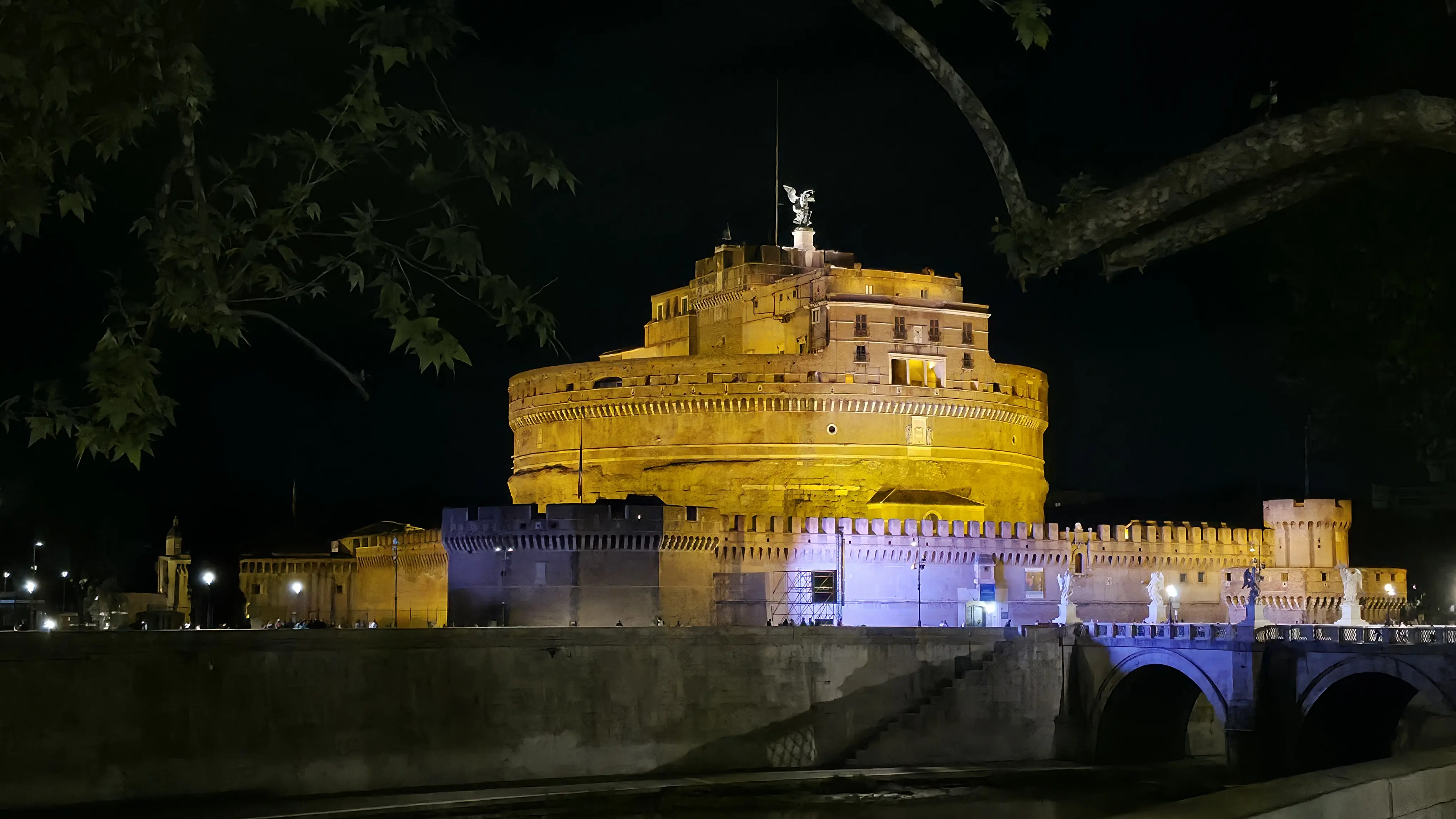Ciao curiosi e sognatori 🏰🌍 Rome has a way of surprising you when you least expect it. Just when you think you’ve wandered every ruin and crossed every piazza, you look up, and there it is: a towering round fortress on the edge of the Tiber, crowned with an angel. Welcome to Castel Sant’Angelo, a place where history spirals upward, where emperors rest, popes hide, and travelers like us are gifted with some of the best views in all of Rome. I visited after a soul-stirring morning at the Vatican. My legs were tired, but my curiosity wasn’t. And Castel Sant’Angelo met me with silence, strength, and something unexpected: peace.
🏛️ A Castle of Many Lives
Commissioned in 135 AD by Emperor Hadrian as a mausoleum for himself and his family, this monumental structure once gleamed with white marble and a golden chariot sculpture atop its roof. It stood apart from traditional Roman tombs, grander, more cylindrical, more defiant of time. But Rome, ever-changing, repurposed it. Over centuries, it became a military fortress, a papal citadel, a refuge in times of siege, a prison, and eventually, a national museum.
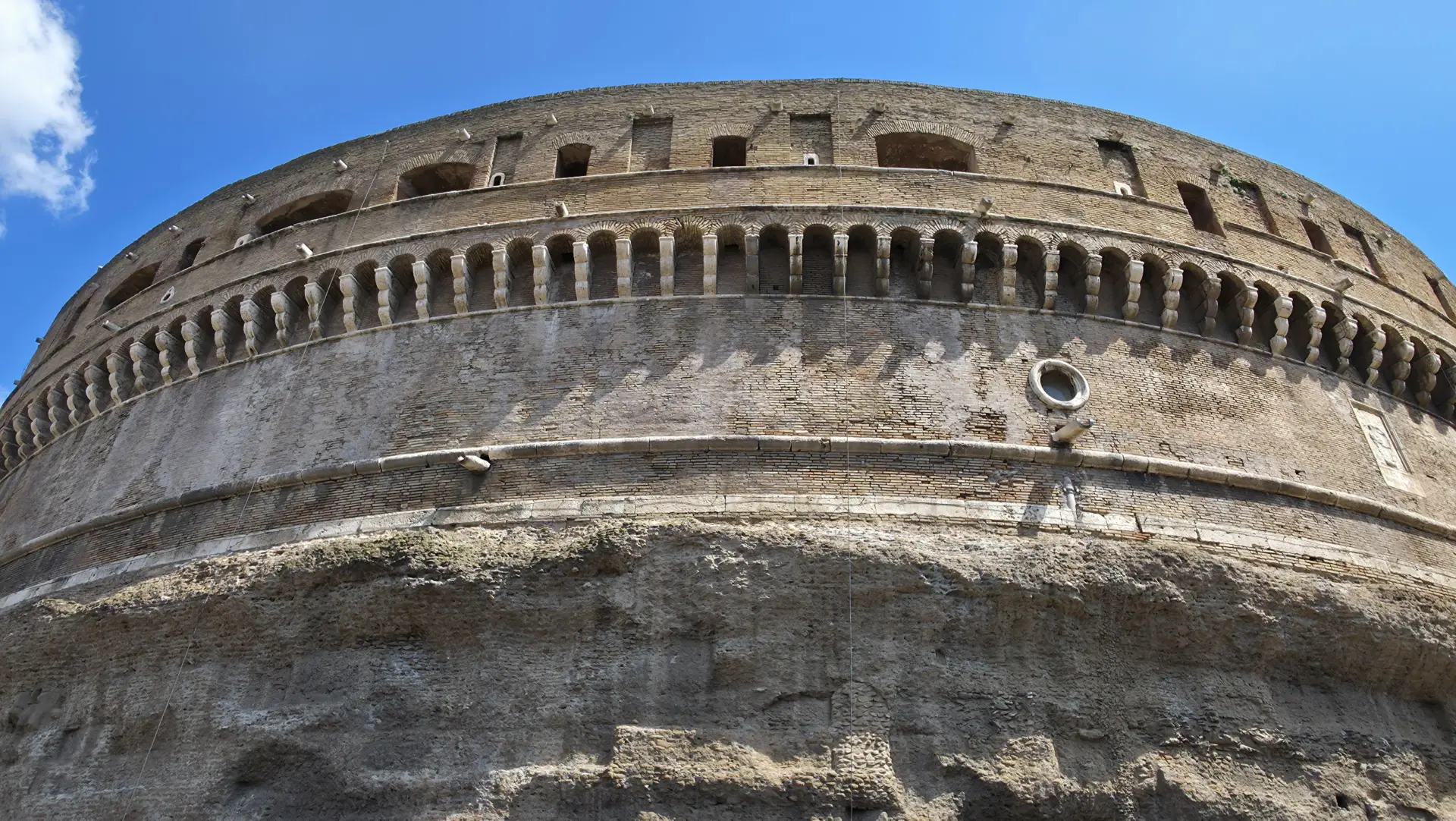
During the Sack of Rome in 1527, Pope Clement VII fled the Vatican through a secret elevated passage, the Passetto di Borgo, and took shelter within these walls. The same walls that once housed the ashes of emperors became a lifeline for popes. This isn’t just a monument. It’s a palimpsest of power.
🌉 The Bridge of Angels
To approach it, you cross the Ponte Sant’Angelo, a bridge that feels like entering a theatrical scene. Lined with ten angel sculptures, the bridge was redesigned in the 17th century under the artistic direction of Gian Lorenzo Bernini, commissioned by Pope Clement IX. Bernini personally carved two of the angels (the Angel with the Crown of Thorns and the Angel with the Superscription) but these masterpieces were later deemed too valuable to remain exposed to the elements. Today, they are preserved in the church of Sant’Andrea delle Fratte, while faithful copies adorn the bridge.
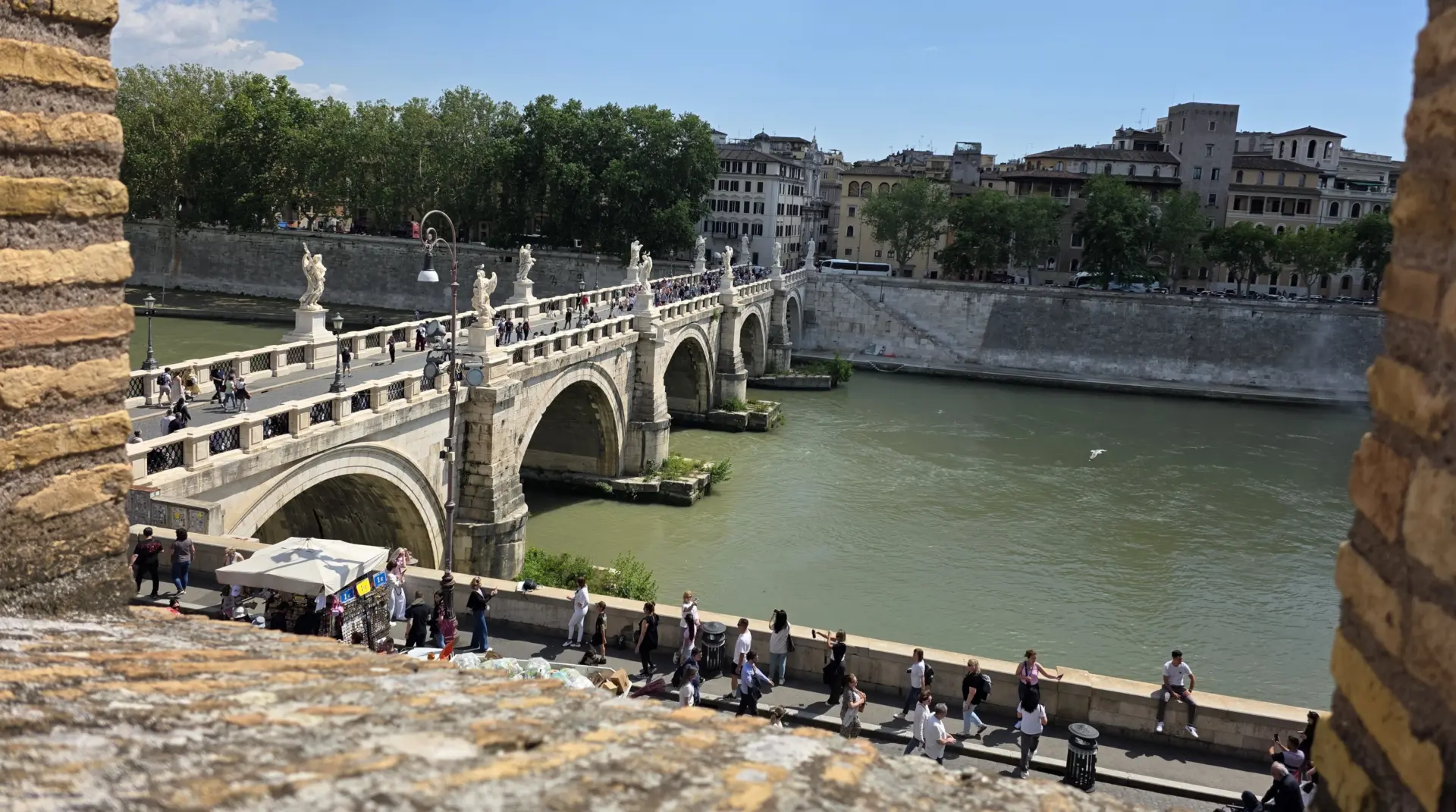
Each angel holds a symbol of Christ’s Passion and seems to evoke a different emotion – sorrow, strength, serenity – depending on how you look at them. As I crossed, I slowed my steps. The sun shimmered on the Tiber below. The breeze brushed past me. I looked back toward St. Peter’s Basilica, framed perfectly behind me, and forward to the looming rotunda of the castle. I felt like I was walking through time.
🏰 Inside the Walls
Once inside, I followed the helical ramp, originally built for funeral processions leading to Hadrian’s resting place. It spirals upward through the core of the structure, cool and hushed, like stepping into the lungs of Rome itself.
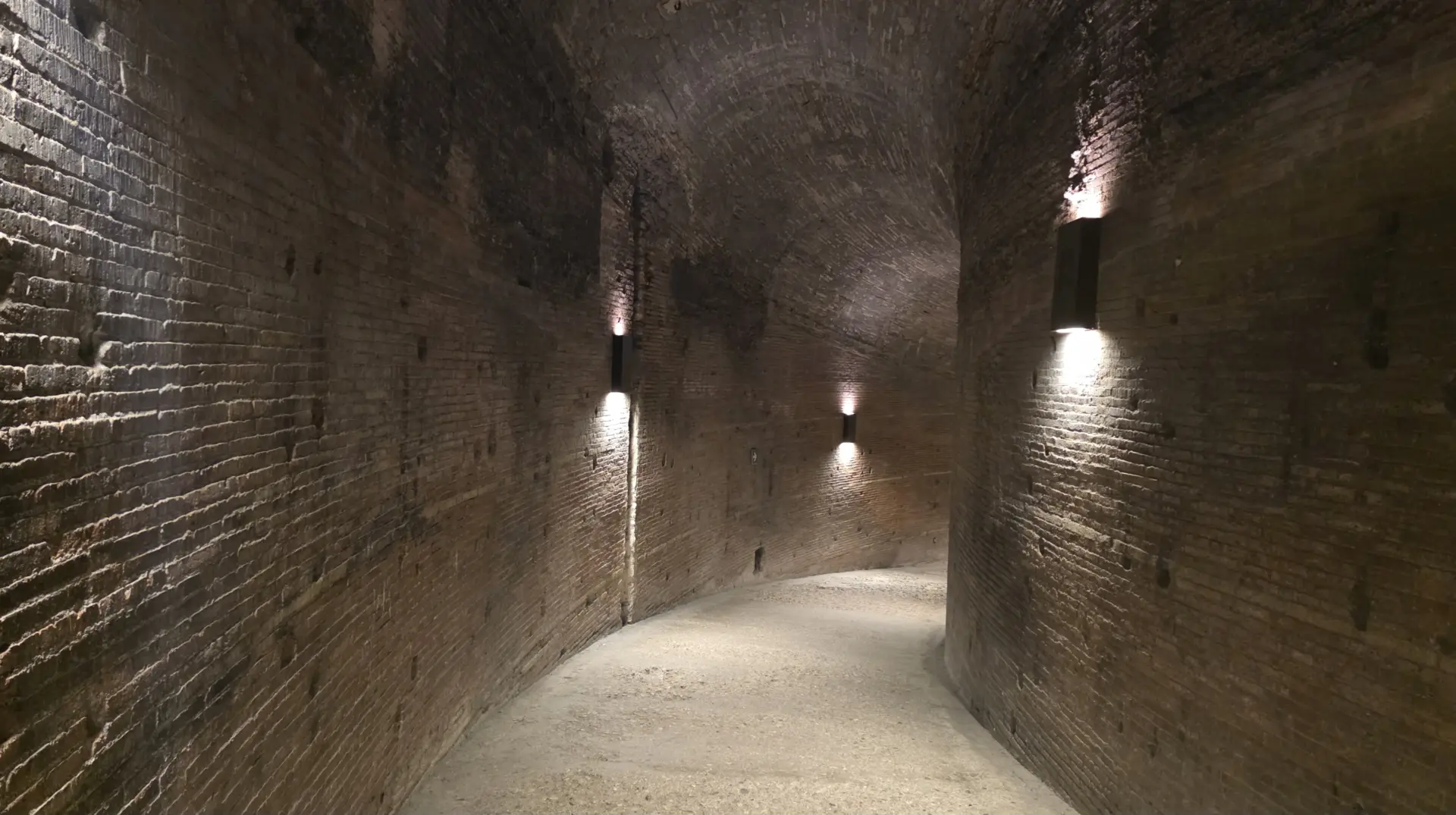
Each level held its own energy:
- Medieval barracks, filled with relics of warfare and defense.
- Opulent papal apartments, adorned with rich Renaissance frescoes and gold-trimmed ceilings.
- Shadowy prison cells, cold and cramped, where traitors and enemies of the state once waited out their fate.
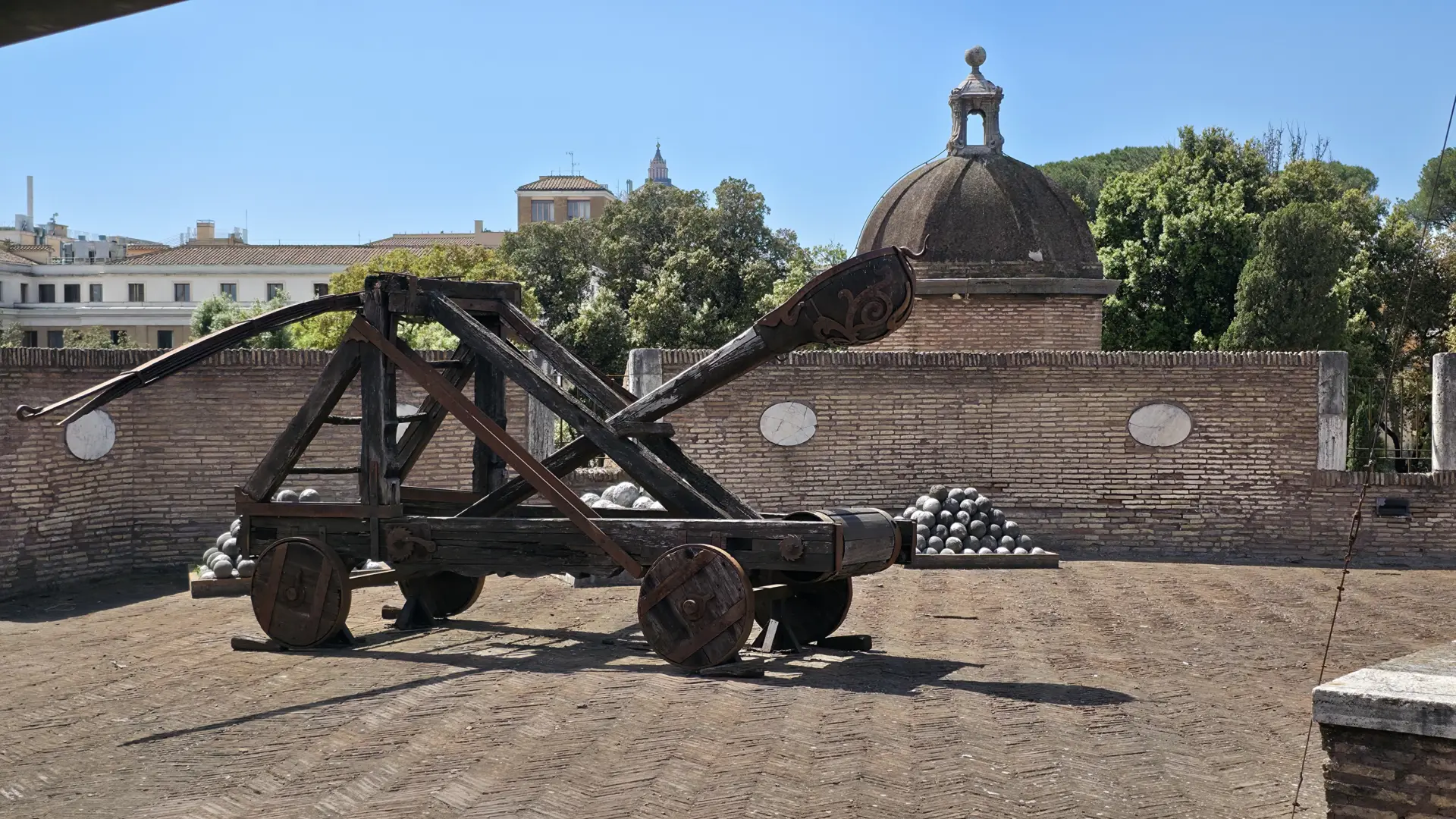
One moment I stood under a painted ceiling meant for a pope’s eyes only. The next, I stood in a dark stone cell, imagining whispers echoing through centuries. This place holds extremes, glory and confinement, artistry and austerity.
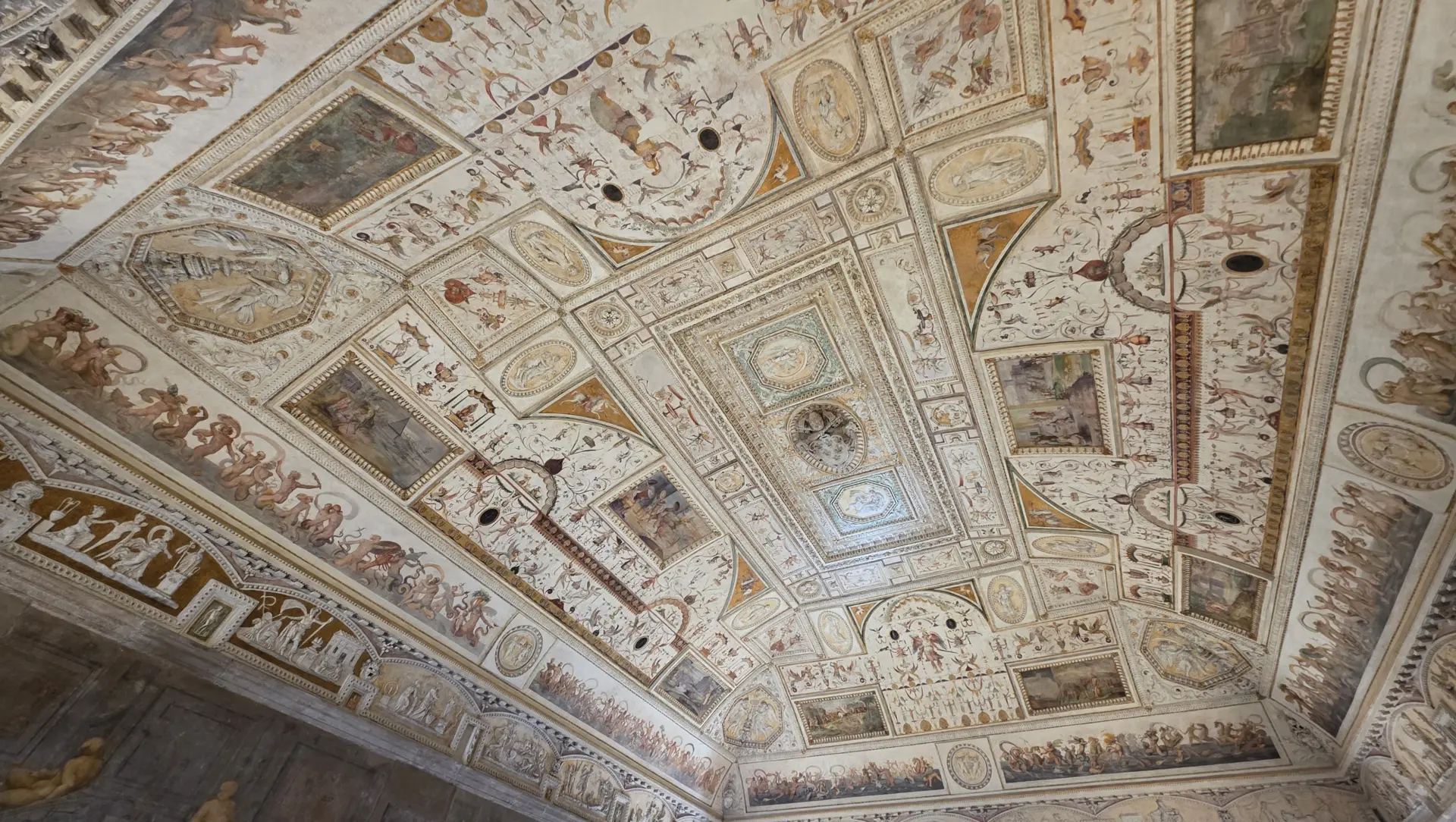
🌇 The Rooftop View
The climb to the rooftop terrace is worth every step. Rome unfolds around you like a dream. You see St. Peter’s Basilica glowing to the west, the Pantheon’s dome further out, and rooftops rolling like a sunlit sea. The Colosseum, the Victor Emmanuel monument, and even the hills beyond Rome stretch into view.
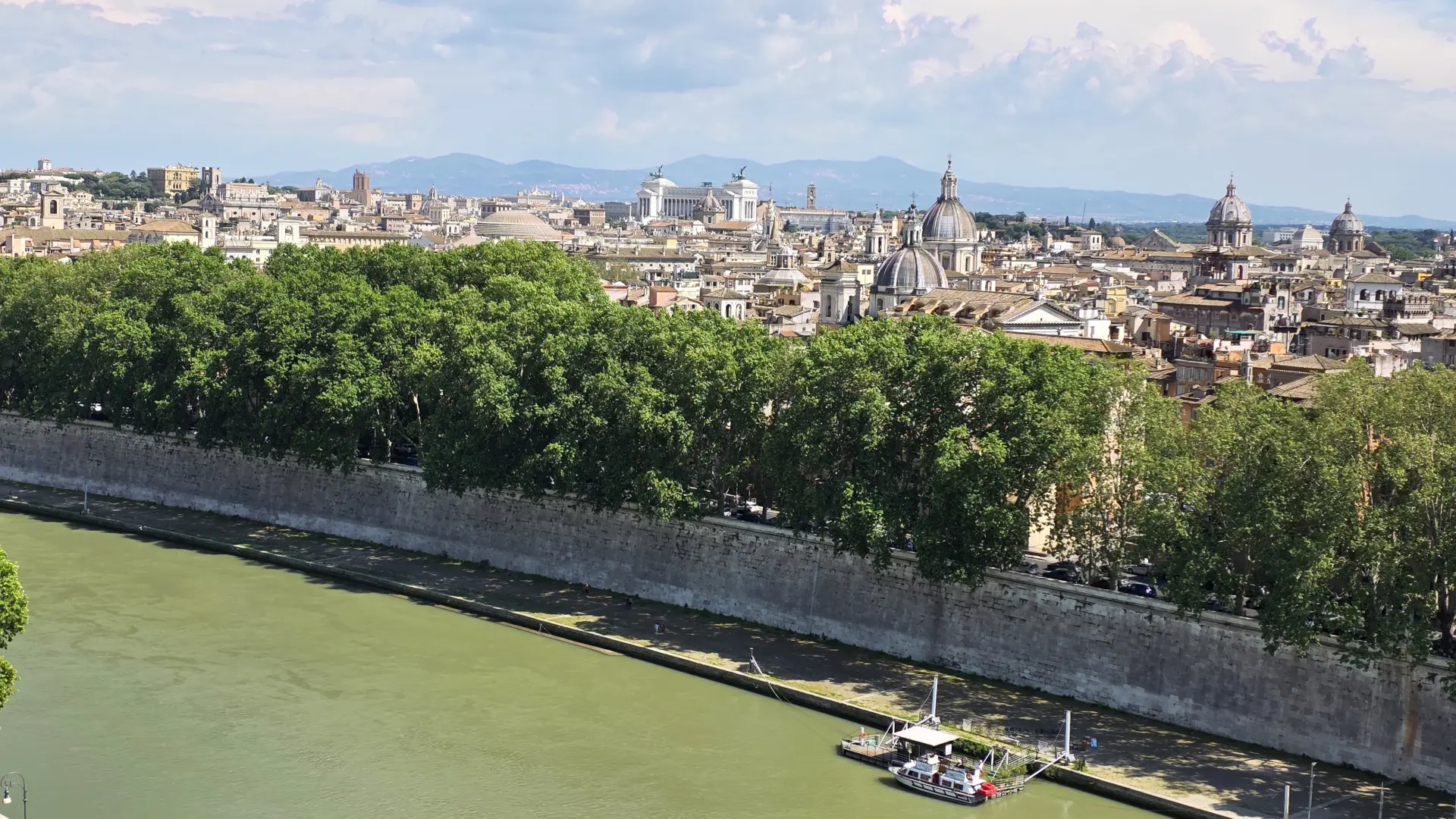
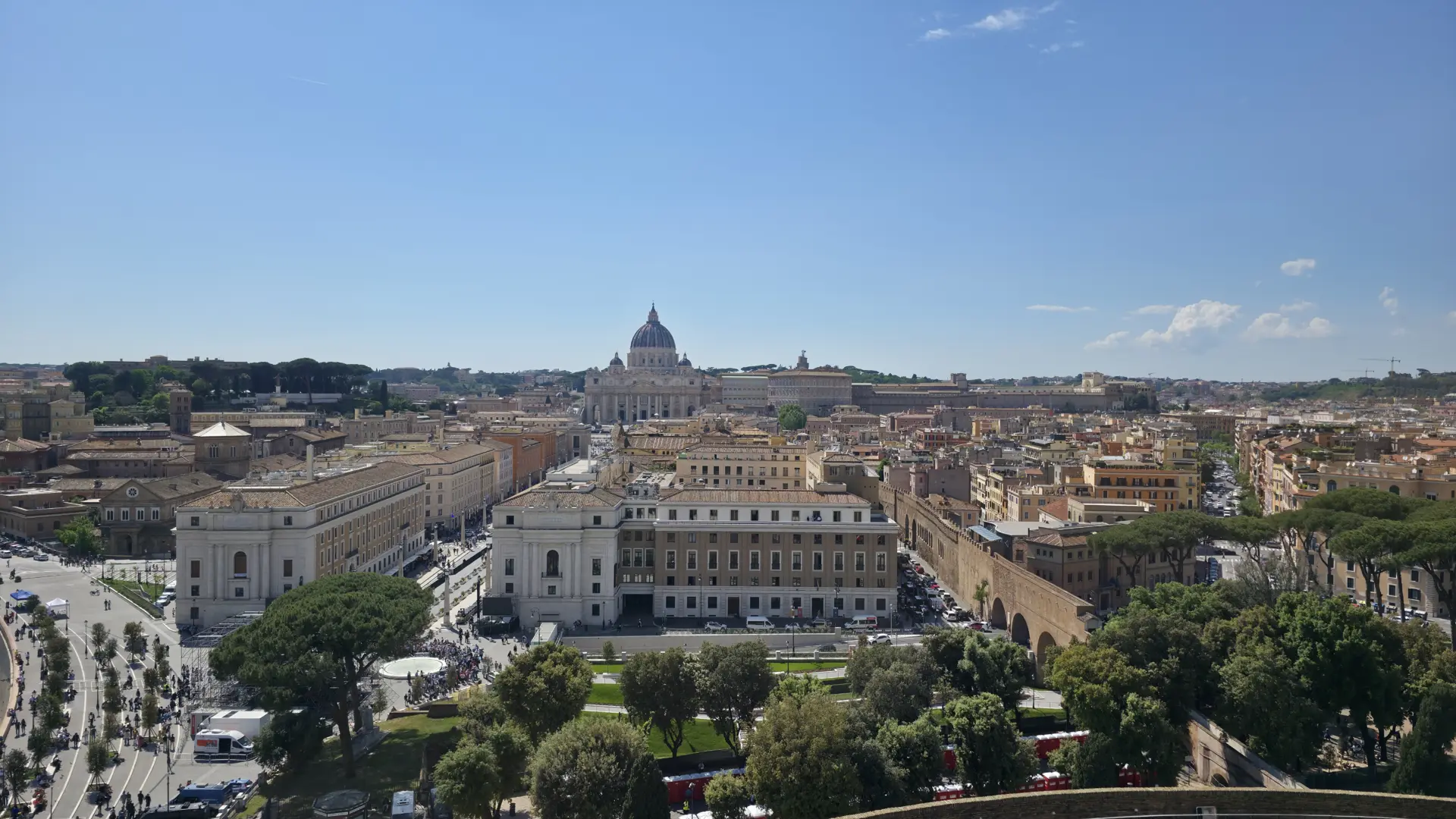
There’s a quiet here, even with other visitors nearby. People tend to speak in hushed tones. The angel above you, Michael, sheathing his sword, reminds you that peace sometimes follows struggle. Legend says Pope Gregory the Great saw the archangel atop this very site in 590 AD, signaling the end of a devastating plague. Since then, the angel has watched over Rome.
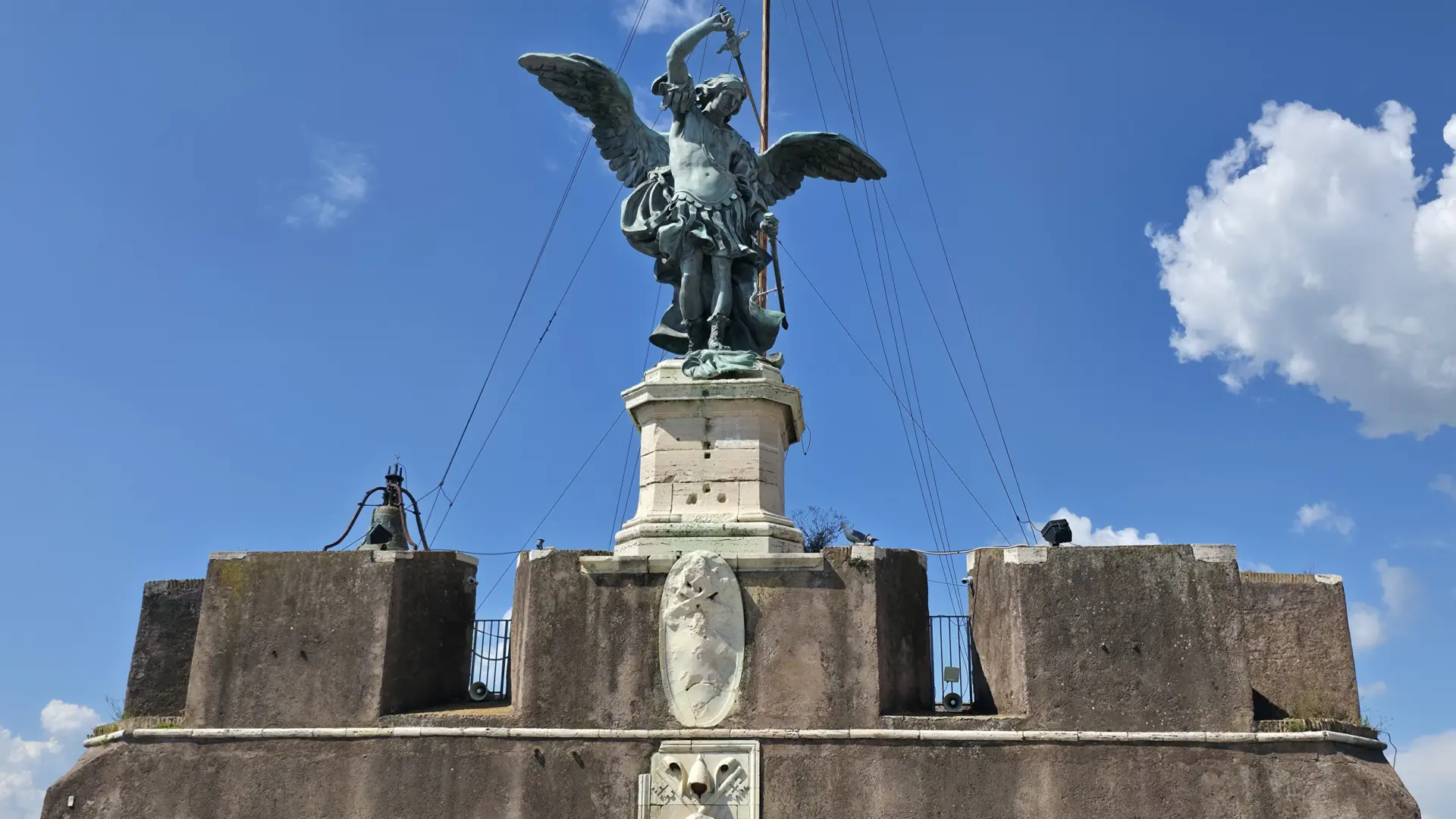
I stood there, breeze in my hair, a little stunned. Not by grandeur, but by how safe and timeless it felt to look out over a city that’s survived everything.
🗺️ Planning Your Visit to Castel Sant’Angelo
- Location: Lungotevere Castello, 50
- Opening Hours: Tuesday to Sunday, 9:00 AM – 7:30 PM (last entry at 6:30 PM)
- Tickets: €16 (discounts available; Roma Pass eligible)
- Recommended Time: 1.5 to 2 hours
- Best Time to Visit: Late morning or late afternoon for light and fewer crowds
- What to Bring: Comfortable shoes (there are lots of stairs!) and your camera
- Bonus Tip: Pair your visit with a walk from the Vatican or a sunset stroll along the Tiber
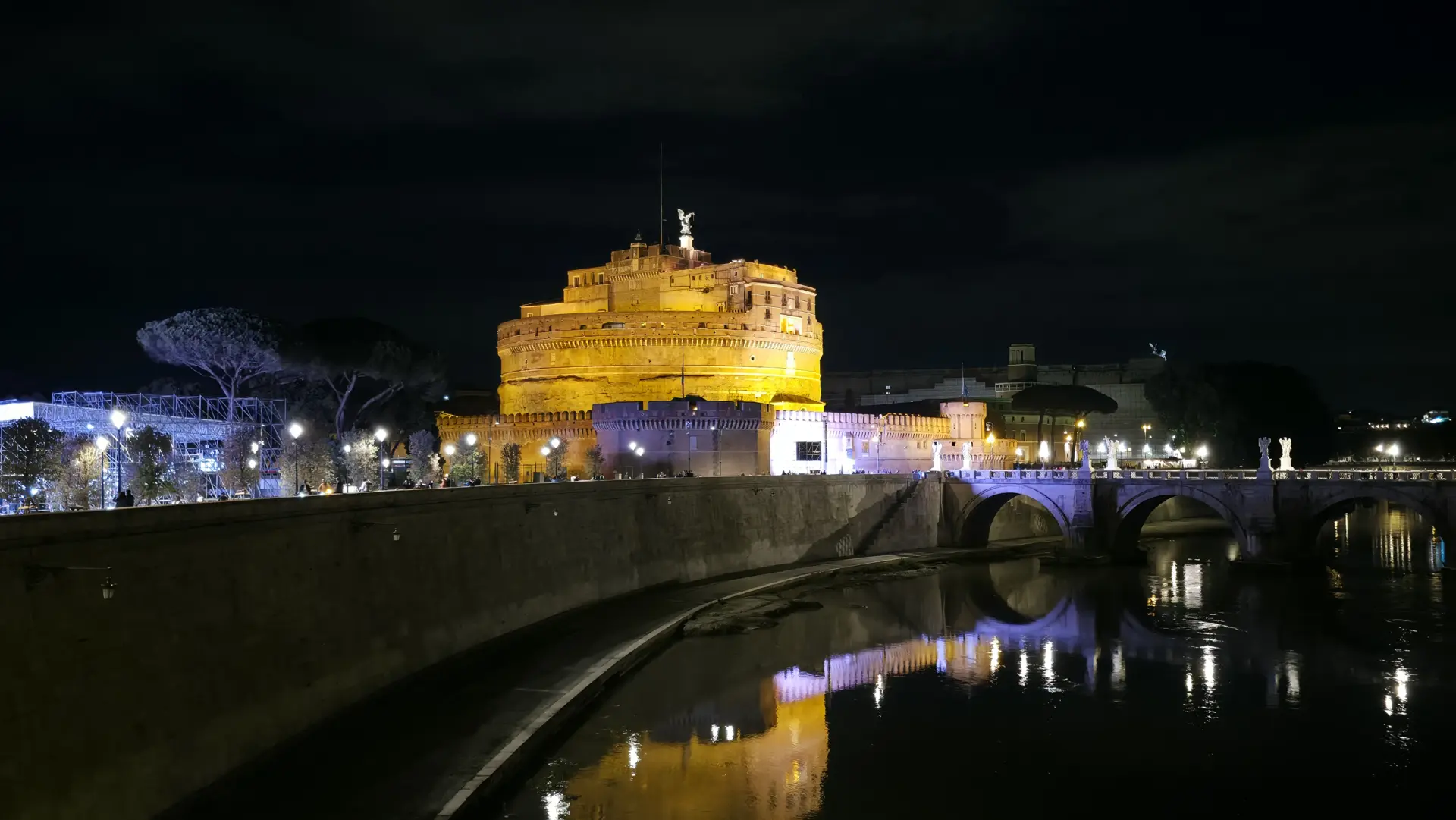
Final Thoughts
Castel Sant’Angelo is not just about emperors, popes, or angels. It’s about all the in-betweens. Life and death. Power and fragility. Light and shadow. This place doesn’t shout. It murmurs. It winds around you like the ramp inside it, drawing you deeper with each step.
Standing atop the rooftop, with all of Rome spread beneath me, I didn’t feel like a tourist. I felt connected, to time, to space, to something bigger than all of us. That’s the real magic of Rome: its ability to hold history and humanity in the same breath.
So if you’re carving your own Roman adventure, make room for Castel Sant’Angelo. It’s quieter than the Colosseum, smaller than the Vatican, but it holds stories that will linger with you long after you’ve gone.
xoxo,
Bubbly 💖

